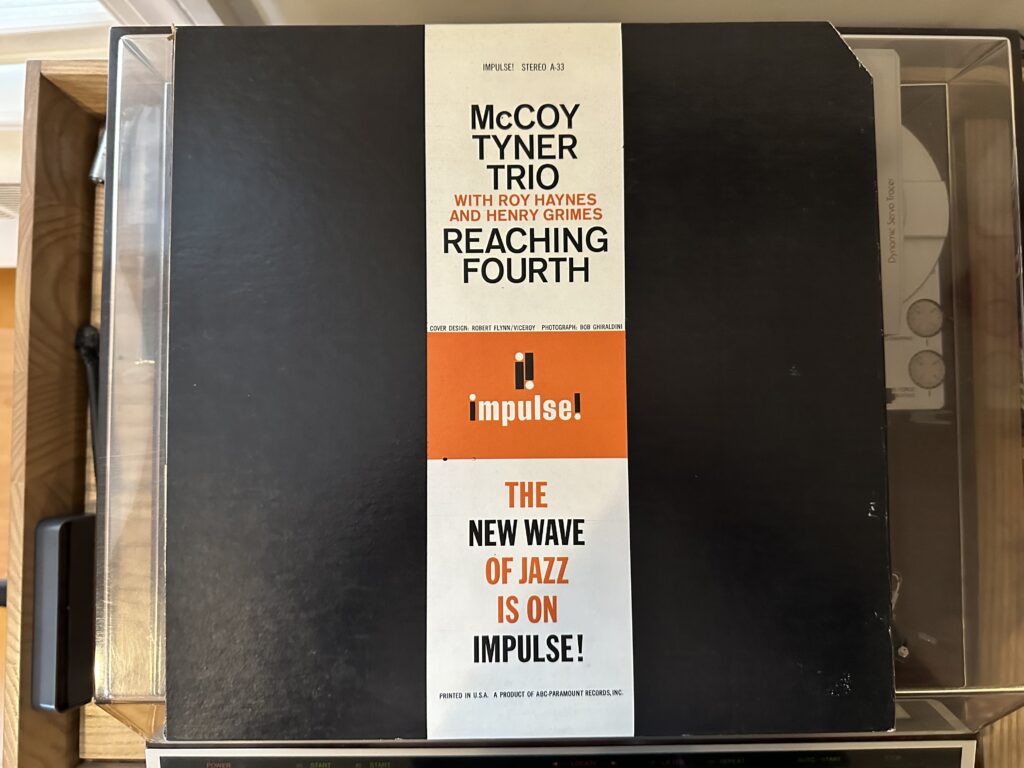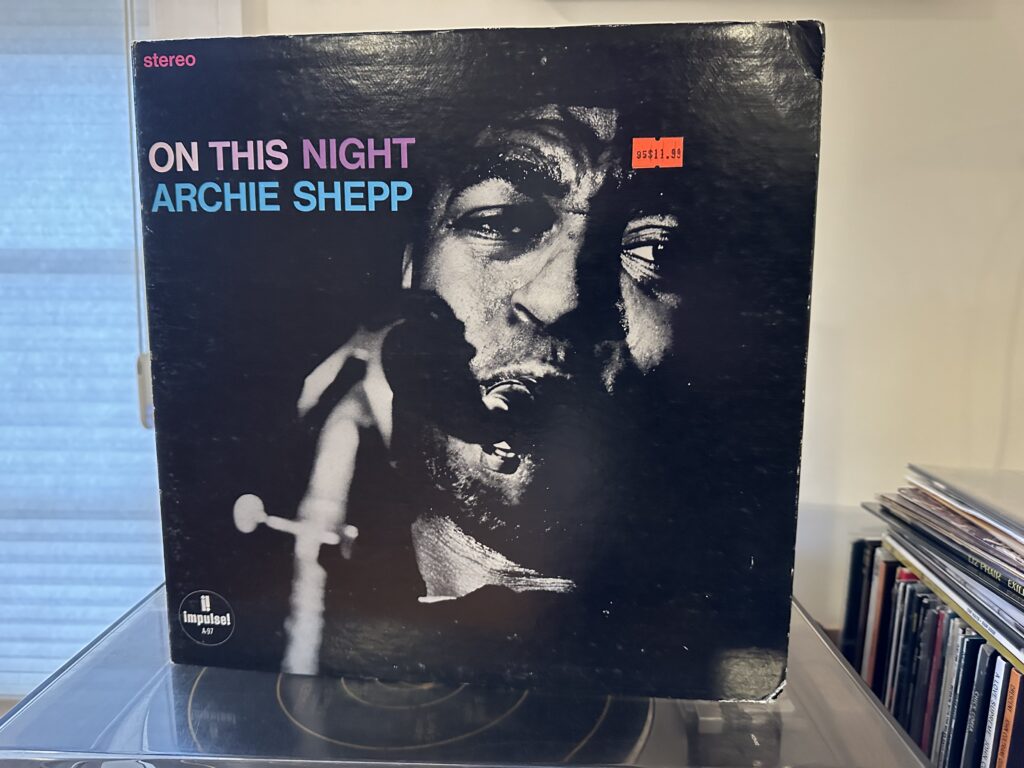
Album of the Week, March 30, 2024
Though their playing time together was limited, Archie Shepp would forever be linked to his mentor John Coltrane, in no small part because of the record that the two of them shared, New Thing at Newport. Recorded July 2, 1965, the record featured the two quartets performing independently, rather than together, but demonstrated the affinity between the two saxophonists’ styles. But for me, Shepp’s group is interesting because it features his performing partnership with another undersung musician, vibraphonist Bobby Hutcherson, a partnership documented more fully on today’s record, On This Night.
Hutcherson (born in 1941 in Los Angeles) was just 24 the year that both New Thing at Newport and On This Night were recorded, but he had already been playing professionally for years, recording his first session at the age of 19 with the Les McCann Trio. Sessions with Herbie Lewis followed and led to Hutcherson joining Jackie McLean’s group on the Blue Note recording One Step Beyond. More Blue Note sessions followed, including collaborations with Grachan Moncure, Eric Dolphy, Tony Williams, and Grant Green. The rest of the players on this session, Hutcherson’s first with Shepp, included J.C. Moses and David Izenson on the closing track, which was recorded at the same session that yielded “Malcolm, Malcolm, Semper Malcolm” on last week’s Fire Music, as well as Henry Grimes on bass, Ed Blackwell on rhythm logs, and both Joe Chambers and Rashied Ali on drums. (We’ll hear more about Ali another time.)
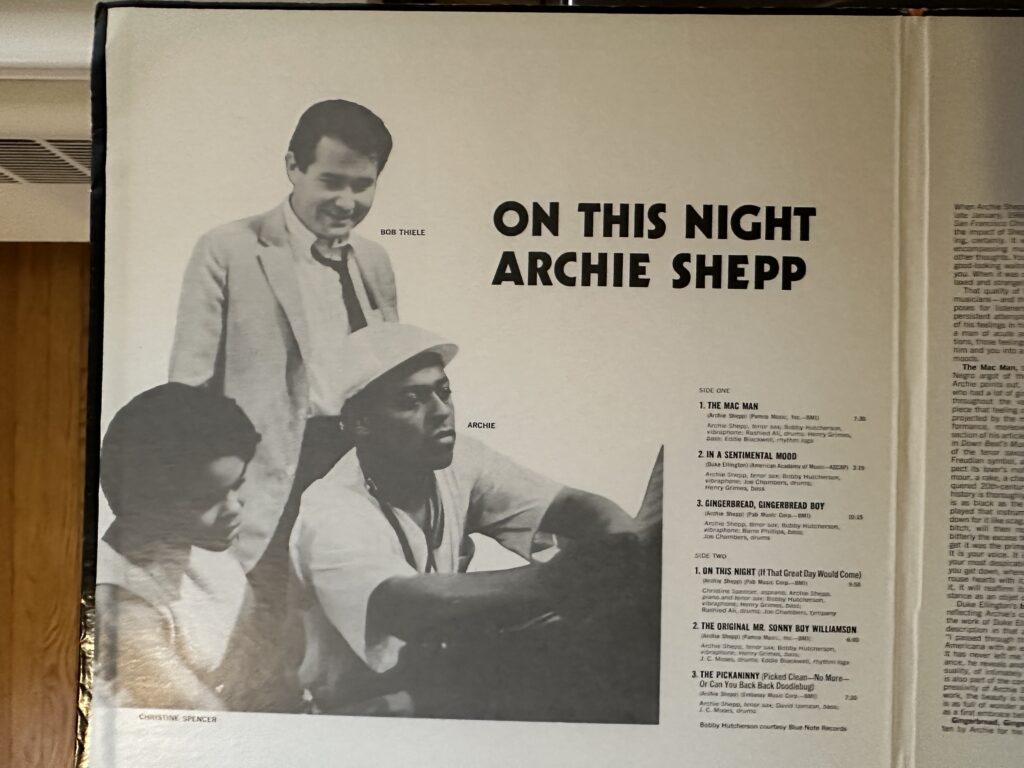
As with Fire Music, Shepp recorded the album in two sessions, the March 9 session shared with Fire Music and an August 12 session that yielded the rest of the tracks, save one. “The Mac Man,” from the second session, starts the album with a post-bop flavor, Hutcherson and Shepp playing the short theme and immediately dropping into mutual improvisation, Shepp blowing sheets of sound while Hutcherson surfs chromatic waves through the cosmos and Grimes explores different modal scales on the bass. The group comes together into something like a blues that just as quickly morphs into a ballad, if only for a moment, before returning to the blues shuffle that reveals itself as the main tune. The blues morphs back into the opening cosmic exploration over what can only be described as a percussion freak-out led by Ed Blackwell’s rhythm logs, before settling into a final loping exploration in a minor key.
Hutcherson modulates into the opening chords of “In a Sentimental Mood,” conjuring a more familiar tonality out of the chaos, as Shepp’s free explorations similarly lead into a statement of the melody of the Ellington/Kurtz/Mills standard that manages to be both delicate and woozy at the same time, evoking the robust articulation of Johnny Hodges. It’s a stunning tonal shift after “The Mac Man.”
“Gingerbread, Gingerbread Boy,” recorded live at Newport, is much freer. Beginning with a bass line from Barre Phillips, the ensemble improvises around major and diminished minor chords from Hutcherson before abruptly shifting into a fast melody that alternates with a slower section. The band then enters hyperspace, collectively exploring the chordal space of the fast section as Shepp overblows his horn over sustained notes in the vibes. The exploration continues as Hutcherson surrounds the group with clouds of vibes, and Shepp ends his solo with a repeated melodic line (VIII – V – VI – III – IV – VI – II – VII). After Hutcherson takes a turn, the melodic line returns, now played over a slow blues. A burst of the fast melody closes the performance, and the side.
“On This Night (If That Day Would Come)” is another thing entirely. A tribute to W.E.B. Dubois, the opening could easily be a 20th century classical art song, in this case performed by Christine Spencer and accompanied by Shepp on piano. The soprano performs Shepp’s poem that calls for the end of racial injustice: “Now is the time for all men to stand/Rise up you starved and toiling masses/My brothers sister all/We cannot fail, justice is our avenging angel/All hail the birth of truth … And the worker’s voice resounds: Give back the valleys, steppes and the plains./They are mine, they are mine./On this night (if that great day would come)/The dawn of freedom/For the people shall take arms as one/No power can prevail/We cannot fail now…” After the soprano leads out of the melody, the band, now joined by Hutcherson, plays a howl before Grimes leads them into a blues, over which Shepp blows a cool solo that rapidly heats up before relaxing back into the blues. Spencer returns with a reprise of the poem, asking, “Behold the blood from my brother’s veins/How will we remember?” and accompanied by Shepp, this time on the saxophone. It’s moving and completely unlike anything else that we will hear from Shepp.
“The Original Mr. Sonny Boy Williamson,” named after the famed blues harmonica player and singer (of “Bring It On Home” fame), is not a blues, but the melody is easily the most quotable on the record before Shepp begins his improvisation. He burns out over chords that seem slightly familiar—is that a touch of “So What” in Hutcherson’s lines?—before the band comes back to the theme once more. It’s an almost peaceful tune, a peace that’s promptly shattered by the last track, “The Pickaninny (picked clean — no more — or can you back back doodlebug).” Starting with a clownish theme, the band shifts into new melodies and improvisations that take us into new places. As Nat Hentoff says in the liner notes, “Having been picked clean, the Pickaninny now knows where he’s at — and he’s moving.”
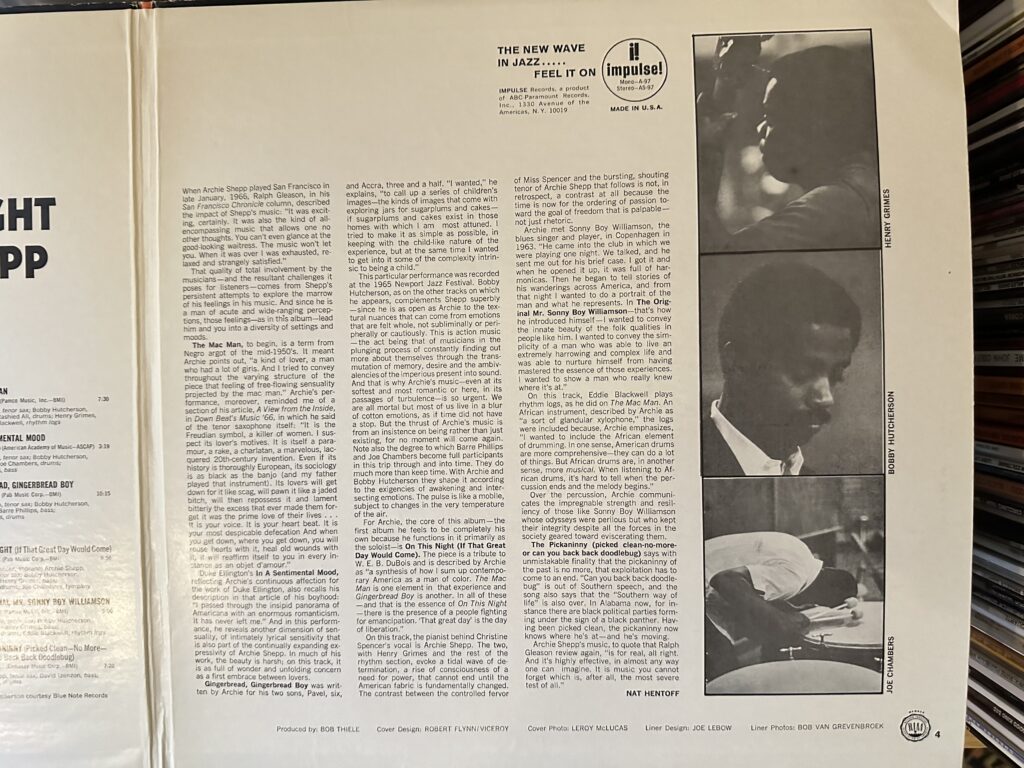
Assembled though it may be from a grab bag of recording sessions, On This Night still stands for me as a monument, though admittedly sometimes an inscrutable one. Held together by the interplay between Shepp and Hutcherson, and the mighty rhythm sections on each track, it’s well worth seeking out in the original LP form.* As for Shepp, he’s still recording, putting out new records every few years, many on his Paris-based Archieball label. The 2017 joint recording with Jason Moran, Let My People Go, was a highlight of that year in jazz for me. But his influence on Trane acted like an orbital boost, slingshotting Trane’s exploratory tendencies into a higher gear. We’ll hear an outcome from all that exploration next time.
You can listen to the album here:
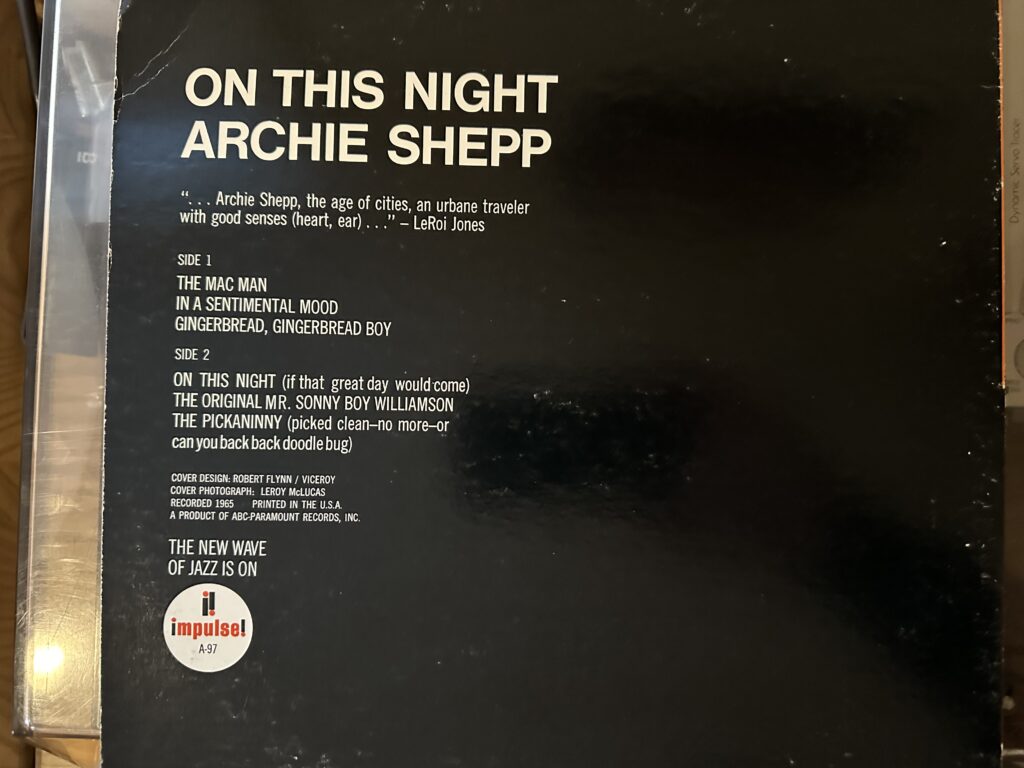
* When On This Night was reissued on CD alongside New Thing at Newport, the reissue producers moved “Gingerbread, Gingerbread Boy” onto the latter recording along with the rest of Shepp’s Newport set. They then filled the void in the set with several alternate takes and outtakes from the session, as well as bringing “Malcolm, Malcolm, Semper Malcolm” from Fire Music. While the resulting compilation makes some sense, it hardly resembles the original intention of the compilation. The original LP is worth seeking out—as the price tag on my 1974 reissue copy (top) indicates, it’s even affordable.
P.S. – If Bobby Hutcherson’s playing intrigues you, you can check him out as both a sideman and a leader on the “Positive Vibrations” edition of Exfiltration Radio.


